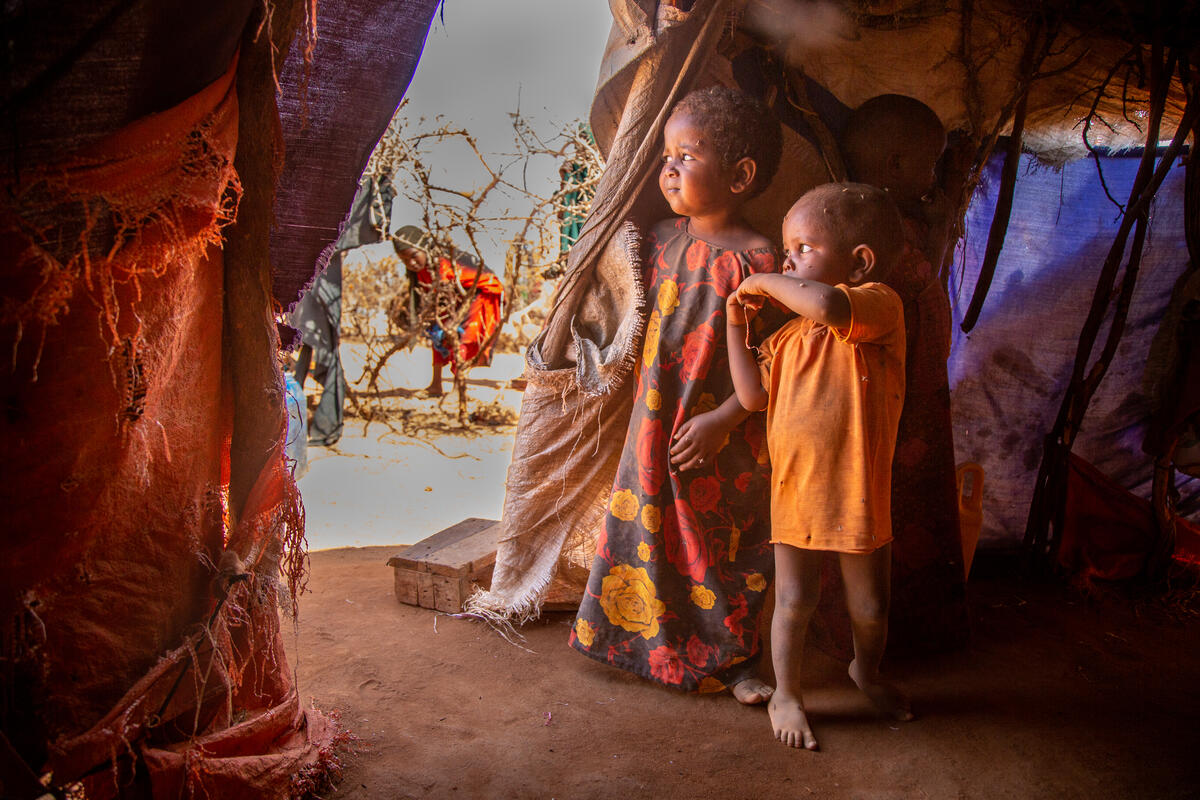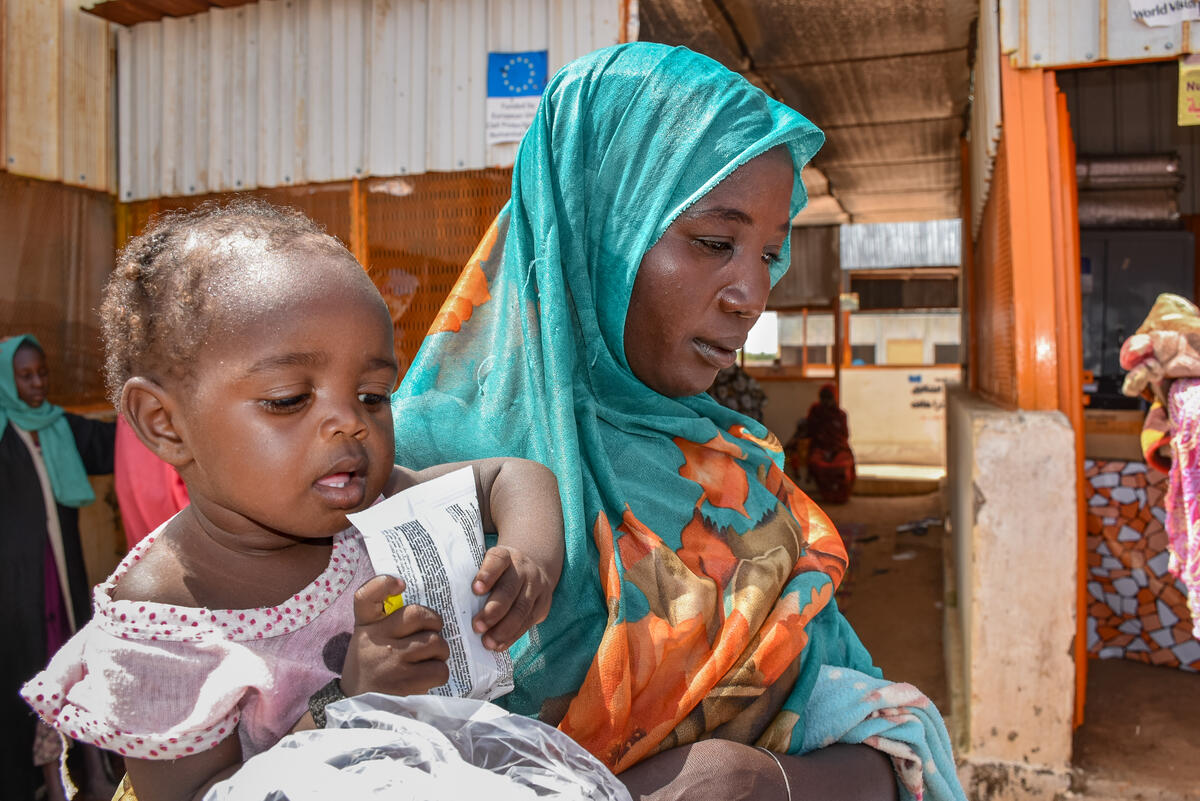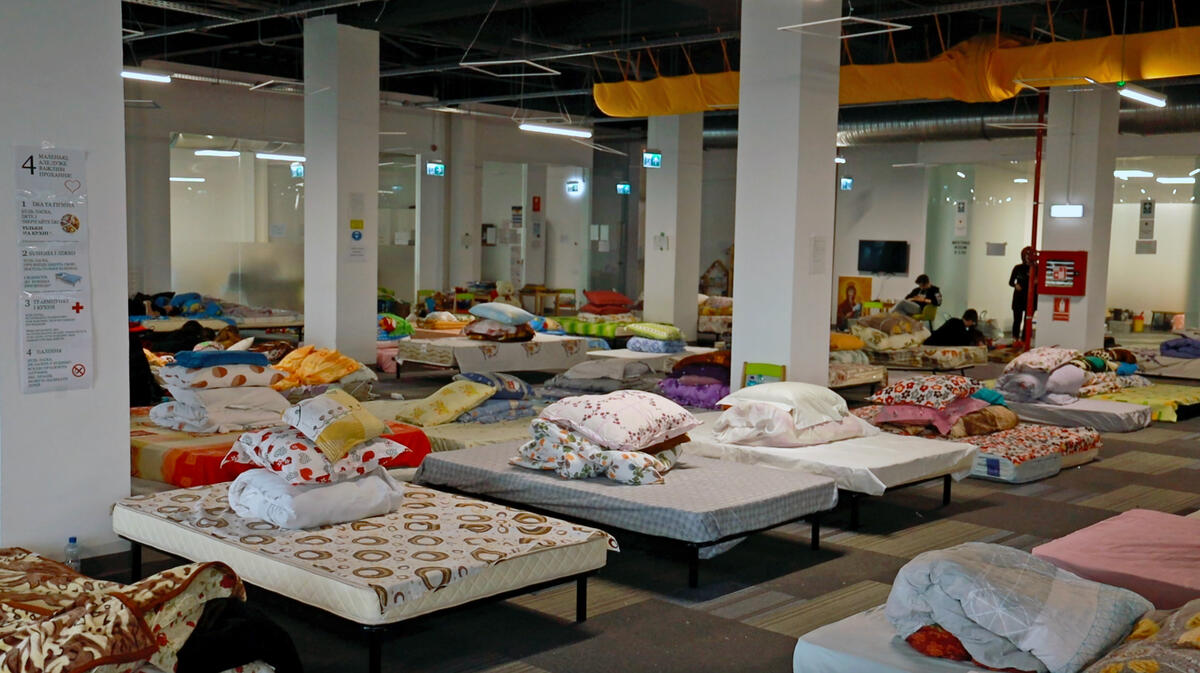We try to shield our children from some of the world’s toughest realities, including armed conflict and forced displacement. But kids don’t live in a bubble.
Before you know it, strong words from your TV or podcast are echoing through your living room. Tough images are flashing across web pages. Playground conversation may be happening that you can’t be present for.
Whether it’s Afghanistan, Israel, Gaza and the West Bank, Ukraine, South Sudan, Somalia or Syria, many children realize that there are armed conflicts around the world. They’ve likely heard about refugees. Some of their friends may be refugees.
Perhaps you want to raise your kids to be caring, global citizens, compassionate toward people in need. But how can you talk with children in age-appropriate ways, about armed conflict and its brutal repercussions for people?
Here are some five tips to consider:
- Do a little research.
- Find out what your children know.
- Don’t force the conversation.
- Explain things in age-appropriate terms.
- Reassure your children they are safe.
1. Do a little research
You don’t need all the answers but know the basics. The better you understand about current conflicts and refugee situations around the world, the better you can explain things in ways that make sense to your child.
World Vision has great resources to help you learn about the crises in places like Ukraine, as well as general information about armed conflict and refugees globally. Here are some links you might find useful:
- What is a refugee? Learn the difference between refugees, migrants, asylum-seekers, and internally displaced people with this FAQ guide.
- How does armed conflict impact the world’s children? Understanding what it’s like for children in conflict may get you thinking about ways to talk with your kids.
- What are some refugee crises, besides Ukraine? This page contains FAQ guides for many of the major crises happening around the world, including Ukraine, Syria, Bangladesh, and Venezuela.

In Doolow, Somalia, two siblings whose family has fled conflict, climate change and hunger survey their temporary neighbourhood in a make-shift camp. Photo: Gwayi Patrick
2. Find out what your children know
Start by asking your kids an open-ended question, one without a ‘right’ or ‘wrong’ answer. For example, “What have you heard about the fighting in the news right now?” is a great way to start, as is “Have you heard much about ‘refugees?’”
From there you might consider, “How did you learn about that?”, so you can better understand where children are getting their information.
Your kids might know more than you think. Or, they might have heard something inaccurate. For kids further apart in age, consider having this conversation with them individually. They’ve likely gained different impressions and understandings.
3. Don’t force the conversation
Kids are all different. Some will be interested in crises happening around the world, while others may not. Some may fear violent conflict could happen in Canada, while others haven’t thought that far. That’s all okay. The main thing is to go with the flow and tailor your response to your child.
Should you worry if your child doesn’t seem concerned for people living in conflict and refugees? Don’t be. Perhaps they’re not ready to think about such painful situations (many experts agree that shielding young children from these brutal realities is best.)
Some children will clearly be natural empaths or passionate world-changers. Others may develop that empathy and confidence to act later in life. That’s okay.
If your kids aren’t showing interest right now, wait for an opportunity to engage them further down the road. You can look for small teaching moments—perhaps when news coverage isn’t so constant and distressing—to encourage kids’ learning about global issues.

When there’s fighting in a country like Sudan, some families may travel far from home to stay safe. Often, they don’t have enough food. We can help make sure the little kids have something to eat, so they don’t get sick from hunger. This little girl is eating special food to help her get better. Photo: Lucy Murunga
4. Explain things in age-appropriate terms
So, they’re interested and want to know more. Or perhaps they’ve gained the wrong understanding of what’s happening. Maybe one of their peers has said that a giant rocket is going to hit Canada, or something equally terrifying.
Geopolitical conflict and refugee crises can be complicated to explain to adults, let alone children. But here’s the good news. Using simple, kid-friendly words and concepts will likely be enough for most little ones.
A caution: it’s important to remember that many children have peers from all around the world, in their schools or classrooms. Some may hail from Afghanistan or the West Bank, while others may be from Ukraine or Sudan or have loved ones there. A few may have left Syria or Somalia to come to Canada.
Be very careful not to apply ‘blame’ for a conflict to a country’s people. You may have your own opinions about what’s happening in these countries and why. But bear in mind that your kids operate in a social, often multi-cultural context. Try to keep the conversation as neutral as possible, for children’s sake.
Here are some ways to come at it – or fill in gaps:
“We use the name ‘refugees’ for people who’ve had to leave their country because it’s too dangerous for them. They go to other countries to stay safe.”
“Some refugees come to Canada to live. Some families stay for a little while, then go home when things are safe. Sometimes they stay for a long time and even become Canadians.”
“The kind of fighting happening right now in places like Ukraine happens in lots of other countries, too. It happens for different reasons. But it’s always sad to see people hurt and afraid.”
“Lots of times, people leave their homes very quickly to get to safe places. They must leave their houses, schools and friends behind.”

When this picture was taken in the wake of the humanitarian crisis in Ukraine, these beds, sheets, and blankets were all waiting for families from Ukraine. When the Ukrainian people arrived, they were very tired. They had travelled quickly to get away from the fighting in their country. This giant room was in Romania, next-door-neighbour to Ukraine. Photo: Brianna Piazza
“The families would prefer to be in their homes. But not when the fighting was happening close to where they lived before Canada. They want things to be safe in their country. They might have felt very sad about leaving there.”
5. Reassure your children they are safe
You may feel concerned about potential global ramifications from crises happening around the world. But this kind of detail is too complex and frightening for most young children.
- Explain to children that Canada is far away from the fighting. A desktop globe, and a chat about the length of plane rides between countries, might help.
- Reassure children that Canada is a safe country. It’s very rare that people fight with weapons here. Even then, it might be one or two people fighting with weapons, not lots. People in Canada don’t have to go away to other countries to stay safe and alive. We can stay right here in our homes.
- Remind children that countries around the world help each other. That there is lots of peace in the world, even when we hear about fighting. That everyone wants to get along. We all want peace.